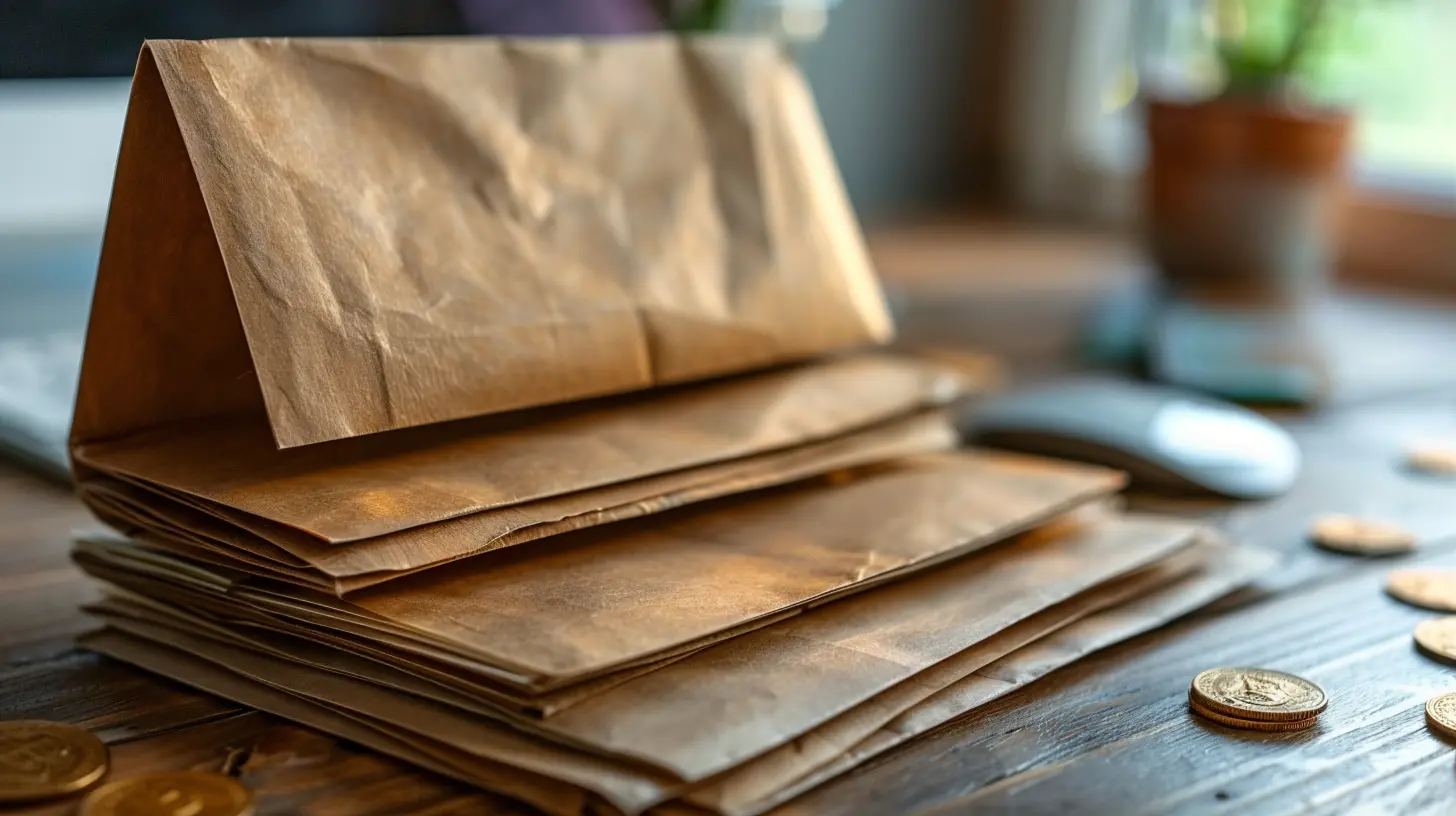The Envelope Method vs. Digital Budgeting: Which is Better?
15 November 2025
Managing money is one of those life skills nobody really teaches you in school, yet it affects every decision you make—from what coffee you buy in the morning to whether or not you can retire before 65. When it comes to budgeting, two methods tend to stand out: the old-school envelope method and the modern digital budgeting apps.
But which one actually works better? Which one will help you finally stop living paycheck to paycheck and start building real financial freedom?
Let’s break it all down together.
What Is the Envelope Method?
First, let’s talk about the envelope method—also known as grandma’s budgeting strategy. It’s simple. You take physical envelopes, label them with different budget categories like groceries, gas, rent, or entertainment, and then put a set amount of cash in each envelope at the start of the month.Once the cash is gone from an envelope, that’s it—you’re done spending in that category until next month. No exceptions.
Sounds a little old-fashioned, right? Maybe. But there's a reason it’s still around.
What Is Digital Budgeting?
Now let’s fast forward to the 21st century. Digital budgeting uses apps and software to manage your money. Think tools like Mint, YNAB (You Need A Budget), EveryDollar, or even spreadsheets on your phone.You connect your bank accounts, track your expenses automatically, categorize transactions, and set up budgets for different spending areas. Some apps even tell you how much you can spend today to stay on track for the month. It's all digits, graphs, and real-time updates.
The Pros of the Envelope Method
Let’s be real. Old-school doesn’t always mean outdated. Here’s why the envelope system still works for a lot of people.1. Physical Cash Builds Awareness
When you physically hand over cash, you FEEL that money leaving your hands. It’s a completely different sensation compared to swiping a debit card or tapping your phone. You become hyper-aware of your spending, and that awareness can lead to better habits.2. It's Simple (And Sometimes Simple Works Best)
No need for Wi-Fi, no need to sync your accounts. You don’t even need a smartphone. It doesn’t get more straightforward than envelope budgeting. If you're someone who hates learning new technology or wants a distraction-free approach, this is a winner.3. Limits Are Crystal Clear
Once an envelope is empty, you're done. That concrete boundary makes it almost impossible to overspend—unless you cheat, of course (but then you’re only cheating yourself).
The Cons of the Envelope Method
Okay, it's not all sunshine and savings.1. It's Not Convenient
Let’s be honest: carrying around a ton of cash is clunky. Most people pay with cards, Apple Pay, or online—so unless you're at a farmer's market, using physical cash everywhere can be a hassle.2. Safety Concerns
Walking around with cash or keeping it at home can pose a security risk. Lose your wallet, and you lose your entire budget. No PIN code or password to protect it.3. No Automatic Tracking
With envelopes, there's no automated way to see spending trends or track your net worth over time. Everything is manual. If you're not good at tracking or remembering where your money went, this could be a problem.The Pros of Digital Budgeting
Now let’s talk about what makes digital budgeting the shiny new favorite for many money-savvy folks.1. Convenience Is King
Want to know your current grocery balance while standing in line at Trader Joe's? Pull out your phone, open the app, and boom—it’s right there. Everything is streamlined and automatic. You spend less time managing your money and more time using it wisely.2. Real-Time Updates and Notifications
Digital budgeting apps give you instant alerts when you're going over budget or have a bill due. These little nudges help keep you in check without you having to remember everything yourself.3. Tracks Everything Automatically
Forget writing things down or saving receipts. Apps categorize your transactions, show where your money goes every month, and help identify spending leaks before they become issues.4. Syncs with Multiple Devices
If you’re budgeting as a couple or family, everyone can stay on the same page. Literally. Most apps synchronize across devices so that changes show up instantly for everyone involved.The Cons of Digital Budgeting
Yep, even digital solutions aren’t perfect.1. Too Easy to Ignore
Ironically, the same automation that makes digital budgeting easy also makes it forgettable. You might set everything up and then... not look at it again for weeks. Out of sight, out of mind.2. Learning Curve
Some people get overwhelmed with charts, categories, and syncing accounts. Not everyone’s a tech wizard. If you’re not comfortable with apps or hate using screens for everything, it might feel like too much.3. Privacy Concerns
Most apps require access to your bank accounts and personal data. If that gives you the heebie-jeebies, this method might not feel right for you. While most platforms are secure, no system is foolproof.Head-to-Head Comparison: Envelope Method vs. Digital Budgeting
Let’s lay it out side-by-side in terms of some core budgeting needs.| Feature | Envelope Method | Digital Budgeting |
|--------|-----------------|-------------------|
| Ease of Use | Very easy (unless you're tracking manually) | Easy for tech-savvy users |
| Convenience | Not convenient for modern purchases | Extremely convenient |
| Tracking | Manual | Automatic |
| Spending Awareness | High (cash is tangible) | Moderate to high |
| Learning Curve | Very low | Moderate |
| Security | Risky (due to cash loss or theft) | Safer (password protected but digital risk exists) |
| Budget Flexibility | Low | High (can adjust in real-time) |
| Collaboration | Tough unless sharing envelopes | Easy to share with others |
Who Should Use the Envelope Method?
Here’s the thing: the envelope method isn’t for everyone. But it shines in certain situations.- 💸 Are you a chronic overspender who needs help cutting back?
- 📵 Do you prefer low-tech solutions that don’t involve screens?
- 🧠 Do you want to build money awareness by actually feeling your spending?
If that’s you, the envelope method might be the game-changer you’ve been looking for.
Who Should Use Digital Budgeting?
On the flip side, digital budgeting has its own loyal fan base—and for good reason.- 📱 Are you always on your phone or laptop?
- 🔔 Do you love getting notifications and automatic updates?
- 📊 Are you interested in data, tracking, and analytics?
Then the digital route probably fits your lifestyle better.
What About a Hybrid System?
Here’s a secret: You don’t have to choose just one.Why not take the best of both worlds?
Try using cash envelopes for your problem areas (like dining out or impulse shopping), and use a digital app to track everything else. That way, you get the awareness of physical cash and the convenience of digital insights.
It’s like wearing both a smartwatch and carrying a notepad—you get real-time updates with some good ol’ fashion accountability.
Final Thoughts: So, Which is Better?
Honestly, there’s no one-size-fits-all answer. The “best” budgeting method is the one that works for you—and one you're most likely to stick with.If you're the kind of person who needs tactile reminders and strong limits, the envelope method can be incredibly effective.
If you live in a fast-paced, digital world and love data, digital budgeting tools are probably your best bet.
Or better yet, combine both and create a budget system that’s tailor-made for your unique habits and goals.
Either way, the goal is the same: gaining control over your money so that it works for you—not the other way around.
So, what’s in your wallet… cash—or an app?
all images in this post were generated using AI tools
Category:
Budgeting TipsAuthor:

Knight Barrett

